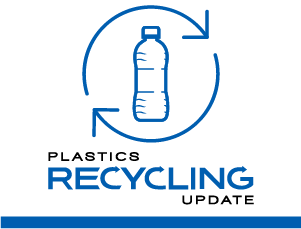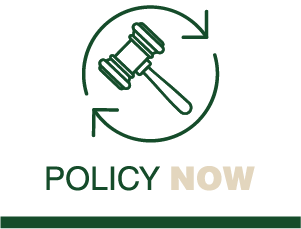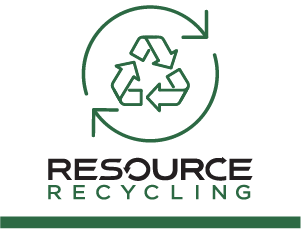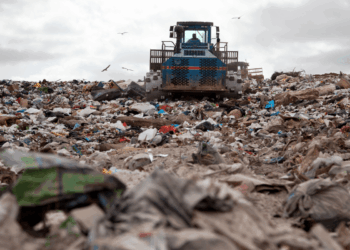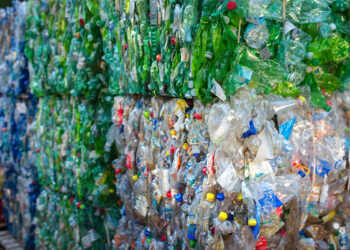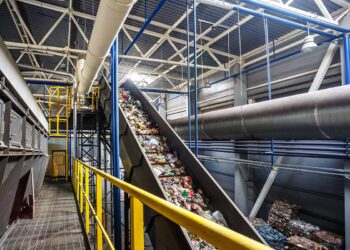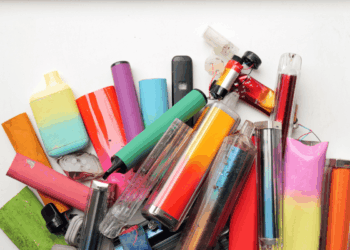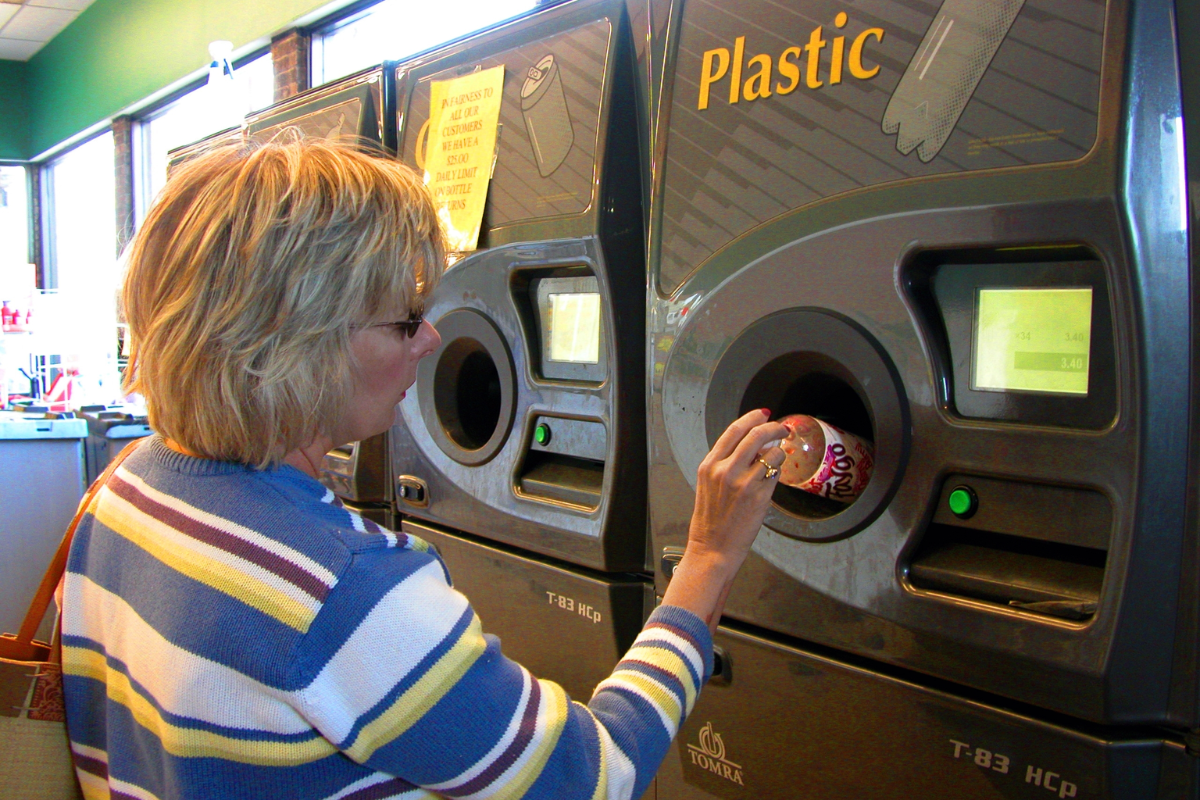A common complaint among MRF operators is that they have little meaningful contact with the packaging industry, despite dealing with headaches from that industry’s products every single day.
But as the SPC Impact packaging conference last week made clear, whether it’s from regulatory compliance, public pressure on image-conscious brands or companies’ own internal interest in recyclability, the recycling industry now has packaging manufacturers’ attention in an unprecedented way.
“For a long time, the packaging industry didn’t care too much about the challenges I have in my MRF,” said Dan Domonoske, executive vice president of California-based MRF operator Potential Industries, during a panel on getting packaging to be curbside recyclable. “And now they do care. And for that, there is much rejoicing.”
Hosted by GreenBlue’s Sustainable Packaging Coalition, the event brought together nearly 800 attendees from the packaging and recycling industries. Although attendees came from a diverse array of businesses — from label manufacturers to Seattle brand giants like Starbucks, Microsoft and Amazon, to MRF operators and reclaimers — there was an unmistakable theme of heightened interest in the curbside recycling space.
Sessions highlighting strategies for effective curbside film recycling and early insights from the first few state extended producer responsibility for packaging programs were standing room only, sometimes even with a line out the door.
Packaging EPR laws — which make product producers financially responsible for facilitating recycling of their products — are a clear driver of the shift, not only with their emergence in a handful of U.S. states but their apparent increasing speed of adoption. After five states passed EPR over four years of legislative sessions, two more — Maryland and Washington state — did so in the two weeks preceding the SPC event. In multiple sessions, speakers gave the caveat that the U.S. EPR map referenced in their presentations was already out of date.
An onstage conversation between GreenBlue Executive Director Paul Nowak and his predecessor in that role, Nina Goodrich, highlighted just how much has changed in recent years. Nowak asked about the coalition membership’s response to packaging EPR back when these policies were first being considered in the U.S. just a few years back.
“It was a hard no,” Goodrich said. EPR was almost like something that wasn’t to be mentioned, Nowak noted.
Fast forward several years, and this year’s conference featured a main-stage Q&A event with Jeffrey Fielkow, CEO of Circular Action Alliance, which has emerged as the principal packaging producer responsibility organization in the U.S. Additionally, in announcing SPC’s latest packaging trends report at the conference, Nowak wrote that the “days of voluntary sustainable packaging initiatives are numbered as we march toward mandatory compliance.”
“The companies that embrace this shift won’t just adapt to our new packaging paradigm — they’ll create it,” he wrote.
All eyes on Oregon before EPR rollout
Oregon was a natural area of focus given the EPR attention: In less than two months, the state will start up the first packaging EPR program in the U.S. Overseen by the state’s Department of Environmental Quality, the program passed its first producer compliance deadline on March 31, when obligated producers had to report the volume of covered products they sold in Oregon last year.
Nicole Portley, program plan lead for Oregon DEQ, noted that at the last SPC meeting in fall 2024, it remained to be seen how producers would comply with the program deadlines.
“We’re really happy to report back to you that producers did show up en masse,” she said. “We had very robust participation for the March 31 deadline. And I think that gives us a sense of ‘all systems go’ that we’re really pleased with.”
And it “wasn’t an easy task for you all,” she told the audience of mostly producers. They had to break their supply chains down into 60 material categories, determine which products were covered and determine who the obligated producer was for each product — in some cases, it’s not the manufacturer. Portley said producers by and large reported those details to the PRO, Circular Action Alliance, which said it received over 1,250 reports.
The deadline naturally provoked questions, such as who is obligated, what is covered and other basic program details. But in some cases, despite the lengthy program development over the last few years, “along with those questions also comes, ‘Why? Why am I obligated? What’s this law for in general?'” Portley added. For DEQ’s part, “we’re in service of the statute and the rules, we’re kind of compelled to deal with the who and the what, rather than the why.”
Still, it was an opportunity to further educate producers, she said. And it’s important for producers to remember that in some ways, U.S. state EPR came about as a compromise between industry and vocal anti-plastic advocates, who wanted far more stringent regulations like product bans. That makes EPR’s success critical for producers if they want to avoid those more intense regulations.
“I think there are consequences if this law doesn’t achieve much,” Portley said. “We need to keep this compromise together, and it does involve achieving true reduction to environmental impacts.”
Data key to EPR program success
The data coming in from producers has been critical to setting the program up properly in Oregon, and it will be elsewhere, too. The more producers that report their data, the more tons of packaging are accounted for in the program, and therefore the lower the average per-ton fee producers will have to pay.
Communicating that dynamic has been key, said Shane Buckingham, EPR program planning lead for Circular Action Alliance.
“It’s really a collective action problem,” he said. “Sometimes you end up with producers that are waiting on the sidelines, but the more they wait and the fewer supplied tons you have, the higher the fee rates are going to go. So you need to get all producers to participate in the program, and that ends up having a collective benefit.”
Fielkow, the CEO of CAA, echoed that sentiment during the plenary Q&A. He acknowledged some producers may be hesitant to comply, including waiting to submit data, for various reasons, but he advised them to avoid that inaction.
“It doesn’t do anybody any good to wait at all,” he said. “If the strategy is to wait, to be late, you’re just increasing the fees for everybody. … For those that are reluctant, you’re much better off registering as per the plan than waiting.”
Asked about one specific reason producers might be waiting — a hypothetical notion that the federal politics of the country may filter down to state EPR programs being delayed or quashed altogether — Fielkow declined to speculate on that front.
“I can tell you, recycling has always been local, recycling is a state and a city and a community initiative,” he said. “And we’ve seen a lot more activity and a lot more interest in exploring what these programs could do for states and the local markets.”
In fact, interest in EPR at the state level has been busier than normal this year, not slower, he said, despite the change in federal political control.
Curbside cost crash course
Packaging producers learned the nitty-gritty details of multiple state EPR programs, but they also got a series of lessons in basic economics of municipal recycling.
Susan Robinson, a consultant who previously held positions at WM and the U.S. EPA, shared a brief overview of how the costs break down. Looking at nationwide averages, she explained that curbside collection makes up 75% of the cost, and processing at a MRF is the other 25%.
That’s important to remember when recycled commodity prices go up and the general sentiment is that recycling companies are making more profits from commodity value. Commodity revenue “doesn’t even cover the processing cost, let alone the process of collection,” Robinson said.
That’s why municipal programs charge households, on average, anywhere from less than $100 per year to more than $150 per year for collection service. The national average is $120 per year, she reported. Using average 2024 household collection data from The Recycling Partnership, Robinson calculated that the national average per-ton curbside collection cost is $290 per short ton.
The cost-per-ton figure provides a way of evaluating program efficiency. Using research firm Eunomia’s 50 States of Recycling report that includes tonnage of material collected in every state, Robinson chose to examine Maine, a relatively high-performing recycling state, and Tennessee, which is relatively low-performing.
Tennessee recycles about a third of the weight of material recycled in Maine, a significant difference, and yet the two states’ average collection costs per ton were only different by $6 for a whole year. That’s because the amount of material collected doesn’t change the fixed costs of servicing a collection route.
“The more material you collect, the lower your cost per unit to collect,” Robinson said. “So in effect, Maine is a much more efficient program because you’re collecting much more material per truck on the street, and that fixed cost stays the same.”
Moving inside the MRF, Robinson cautioned that every single U.S. recycling facility has different costs, varying by age of equipment, labor costs, how well a facility is maintained, contamination and what is being collected at the curb.
With that caveat, Robinson reported an average nationwide MRF processing cost of $110 per ton, or $45 per household per year, using the same household average data from The Recycling Partnership. And for average commodity value, using five years of data reported by the Northeast Recycling Council, Robinson settled on a figure of $88 per ton on a national average, or $36 per household per year.
With collection and processing costs and the per-household commodity value offset known, Robinson presented a total per-household system cost of $129 per year. Those figures equal out to commodity value covering just 60-80% of MRF processing costs, on a national average, and just 20% of the total cost of collection plus processing.
That $129 per year “is what has to be paid in a tax or a fee or a rate somewhere, because it’s not coming from anywhere else, so that’s a net cost to the system,” she said.
How curbside realities are shifting brand behavior
Outside of paying into an EPR program, what is a brand supposed to do about improving collection, which may seem to be more of a function of urban planning and general public habits?
There are three key roles brands can play, said Natalie Betts, assistant vice president of sustainability at the Recycled Materials Association, and they come down to “volume, value and contamination.”
On the value side, packaging companies can play a role by generating post-consumer recycled content demand for the same products they’re putting onto the market. Incorporating that post-consumer content is a way of “pulling it through the system,” Betts said.
As for volume, Betts said brands can help by putting products onto the market that are similar to other recyclable products already accepted in the bin. Doing so leads to sorting efficiencies, rather than introducing new sorting challenges.
And on contamination, she highlighted the role brands play in on-package labeling, which is key to reducing customer confusion, therefore reducing contamination and building public trust.
“So we grow participation, and we grow participation that is accurate to what recyclers accept,” Betts said.
In one major example of a brand considering the volume component of that equation, Amazon has in recent years shifted a huge amount of previously plastic packaging into paper formats. With an army of 120 automated paper packaging machines in two of the company’s fulfillment centers, where items are packaged for shipment to the customer, Amazon is in the midst of a major move away from plastic.
Patrick Lindner, vice president of mechatronics and sustainable packaging at Amazon, said that in 2024, the company took about 130 million packages that would previously have been in plastic and converted them to paper packaging. And whereas two-thirds of its packaging contained plastic at the end of 2023, it was down to one-third by the end of 2024.
Lindner made clear that the company’s move was not at its core about the debate between paper and plastic.
“We are moving to paper because of curbside recyclability trends,” he said during a keynote presentation.
“For all of us who have been in this industry a long time, it’s not that plastics aren’t recyclable, we know technically they can be recycled,” he said, noting Amazon itself is involved in some plastic recycling investments. “The challenge is just curbside recyclability.”
Even drop-off recycling provides an extra step, he added. And given that Amazon’s service model is based on shopping convenience and ease, having its packaging as easy to recycle as possible meant focusing on curbside.
In other news at the conference:
- SPC’s packaging trends report explored four key trends: growing momentum for reusable packaging in the spirits and beauty sectors, packaging companies setting more boundaries on their packaging material selections, a growing focus on material health and avoiding toxic chemicals in products, and an increase in specialized material collectors like Ridwell.
- A number of plastic and packaging industry associations launched the Packaging Recyclability Advancement Task Force, an initiative targeting greater recyclability in polyethylene squeeze tubes and PET thermoform containers. The group plans to develop “clear, actionable guidance focused on improving recyclability beyond design alone,” according to the announcement, which was released at the conference. The coalition includes GreenBlue, the U.S. Plastics Pact, The Recycling Partnership, the Recycled Materials Association, the Solid Waste Association of North America, and the Association of Plastic Recyclers. (APR owns Resource Recycling, Inc., publisher of Resource Recycling.)



